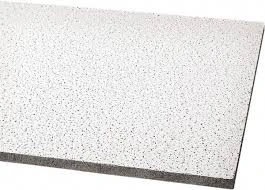9 月 . 19, 2024 13:03 Back to list
suspended ceiling t bar
The Advantages of Suspended Ceiling T-Bar Systems
Suspended ceiling T-bar systems have become increasingly popular in modern construction and renovation projects. These versatile frameworks not only enhance the aesthetic appeal of a space but also offer functional benefits that make them an excellent choice for various environments.
Understanding T-Bar Systems
At its core, a suspended ceiling T-bar system consists of metal grid frameworks that support ceiling tiles or panels. The T-bar refers to the T-shaped metal components that intersect to form a grid system. This grid is suspended from the existing ceiling using wires, allowing for a space between the original ceiling and the new one. This space can be utilized for various purposes, such as hiding plumbing, electrical wiring, and HVAC systems, providing both practical and aesthetic solutions.
Aesthetic Versatility
One of the most significant advantages of using a suspended ceiling T-bar system is its versatility in design. T-bar ceilings can accommodate a wide array of ceiling tiles, available in different colors, textures, and materials. This flexibility allows designers to create an attractive ceiling that complements the overall interior design of the space. Whether for commercial offices, healthcare facilities, retail environments, or educational institutions, these systems can enhance visual appeal and create a more inviting atmosphere.
Acoustic Performance
suspended ceiling t bar

In addition to their aesthetic benefits, suspended ceiling T-bar systems play a crucial role in acoustic performance. Many ceiling tiles designed for T-bar systems are specifically engineered to absorb sound, reducing noise levels in the room above and below. This feature is particularly valuable in open office environments, conference rooms, or any space where sound control is a priority. By effectively managing acoustics, T-bar ceilings contribute to a more comfortable and productive environment.
Ease of Installation and Maintenance
Suspended ceiling T-bar systems are relatively easy to install compared to traditional drywall ceilings. The grid system simplifies the process, ensuring that tiles can be quickly and efficiently placed. Moreover, if a tile needs to be replaced or if access to overhead utilities is required, it can be done without major disruption. This easy access to the ceiling space can save time and labor costs, making T-bar systems a cost-effective solution for both installation and long-term maintenance.
Energy Efficiency
Another compelling advantage of T-bar ceilings is their contribution to energy efficiency. The air space created by the suspended ceiling can provide insulation, helping to regulate temperature and reduce heating and cooling costs. Additionally, many modern ceiling tiles are designed to reflect light, which can improve the lighting quality of a space and minimize the need for additional electrical lighting.
Conclusion
In summary, suspended ceiling T-bar systems offer numerous benefits that make them an excellent choice for various construction and renovation projects. Their aesthetic versatility enhances the visual appeal of spaces, while their auditory performance, ease of installation, and contributions to energy efficiency make them highly practical. As more architects and builders recognize these advantages, T-bar systems are sure to remain a popular choice in the design and construction of modern interiors. Embracing this innovative ceiling solution can lead to significant improvements in both functionality and style, underscoring the value of suspended ceiling T-bar systems.
-
Revolutionizing Interior Design with Ceilings t grid Suspended SystemNewsOct.29,2024
-
Revolutionizing Ceiling Design with ceiling access panel with Gypsum Tile WaterproofNewsOct.29,2024
-
Revolutionizing Interior Design with PVC Gypsum Ceiling: A Comprehensive GuideNewsOct.29,2024
-
Elevating Interior Design with High quality Mineral Fiber Ceiling TilesNewsOct.29,2024
-
Revolutionizing Interior Design with PVC Gypsum Ceiling: A Comprehensive GuideNewsOct.29,2024
-
Elevating Interior Design with High-Quality Mineral Fiber Ceiling Tiles: A Comprehensive GuideNewsOct.29,2024







